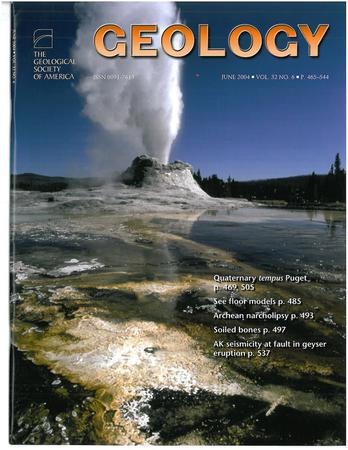Sediment routing in an incised valley during Hurricane Harvey (2017) in Houston, Texas, USA: Implications for modern sedimentation
IF 4.6
1区 地球科学
Q1 GEOLOGY
引用次数: 0
Abstract
Southeastern Texas (United States) recorded one of the largest flooding events in U.S. history during Hurricane Harvey (25−31 August 2017), mobilizing millions of cubic meters of sediment in Houston fluvial-estuarine systems. We conducted an integrated quantitative analysis to determine the net minimum volume of sediment transported during the storm using subaerial elevation change, satellite and ground-based images, and sediment dredging reports along major waterways. The 12 fluvial-estuarine streams and two controlled reservoir drainages in the Houston area transported a minimum of ∼2.723 × 107 m3 of sediment. This volume is ∼6−51 times larger than the average annual volume of sediment delivered to Galveston Bay in modern times (in the past 200 yr), and ∼30−118 times larger when compared to Holocene rates. Nearly ∼26% of the measured volume was deposited in Addicks and Barker reservoirs, decreasing holding capacities by ∼1.2% and ∼1.6%, respectively. In the stream drainages, sediment was mobilized from west-northwest of Houston and pulsed toward Galveston Bay, highlighting the extreme short-term variability in sediment delivery. Sediment flux through the Houston region during Harvey is an example of sediment storage followed by a pulsed delivery of high sediment volume rather than continuous delivery of sediment. Comparison of sediment volumes transported through natural and modified drainages through Houston demonstrates that channel modification resulted in significant bypass of sediment downstream. Urban watershed management is more effective when continual updates are implemented based on regional circumstances rather than based on historical fluxes.哈维飓风(2017)期间美国德克萨斯州休斯顿切割山谷的沉积物路线:对现代沉积的影响
在飓风哈维(2017年8月25日至31日)期间,德克萨斯州东南部(美国)发生了美国历史上最大的洪水事件之一,在休斯顿河流河口系统中调动了数百万立方米的沉积物。我们利用地面海拔变化、卫星和地面图像以及主要水道的沉积物疏浚报告,进行了综合定量分析,以确定风暴期间运输的净最小泥沙体积。休斯顿地区的12条河口河流和2条控制水库流域输沙量最少为~ 2.723 × 107 m3。这一体积比近代(过去200年)输送到加尔维斯顿湾的年平均泥沙体积大~ 6 ~ 51倍,比全新世速率大~ 30 ~ 118倍。测量体积的近26%沉积在Addicks和Barker储层中,其持有能力分别下降了1.2%和1.6%。在河流排水中,沉积物从休斯顿西北偏西方向被动员,并向加尔维斯顿湾移动,突出了沉积物输送的极端短期变异性。哈维期间通过休斯顿地区的泥沙通量是沉积物储存的一个例子,随后是高沉积物体积的脉冲输送,而不是沉积物的连续输送。通过休斯敦自然流域和改造后的流域输沙量的比较表明,河道改造导致了下游沉积物的显著绕道。城市流域管理在根据区域情况而不是根据历史变化进行持续更新时更为有效。
本文章由计算机程序翻译,如有差异,请以英文原文为准。
求助全文
约1分钟内获得全文
求助全文
来源期刊

Geology
地学-地质学
CiteScore
10.00
自引率
3.40%
发文量
228
审稿时长
6.2 months
期刊介绍:
Published since 1973, Geology features rapid publication of about 23 refereed short (four-page) papers each month. Articles cover all earth-science disciplines and include new investigations and provocative topics. Professional geologists and university-level students in the earth sciences use this widely read journal to keep up with scientific research trends. The online forum section facilitates author-reader dialog. Includes color and occasional large-format illustrations on oversized loose inserts.
 求助内容:
求助内容: 应助结果提醒方式:
应助结果提醒方式:


